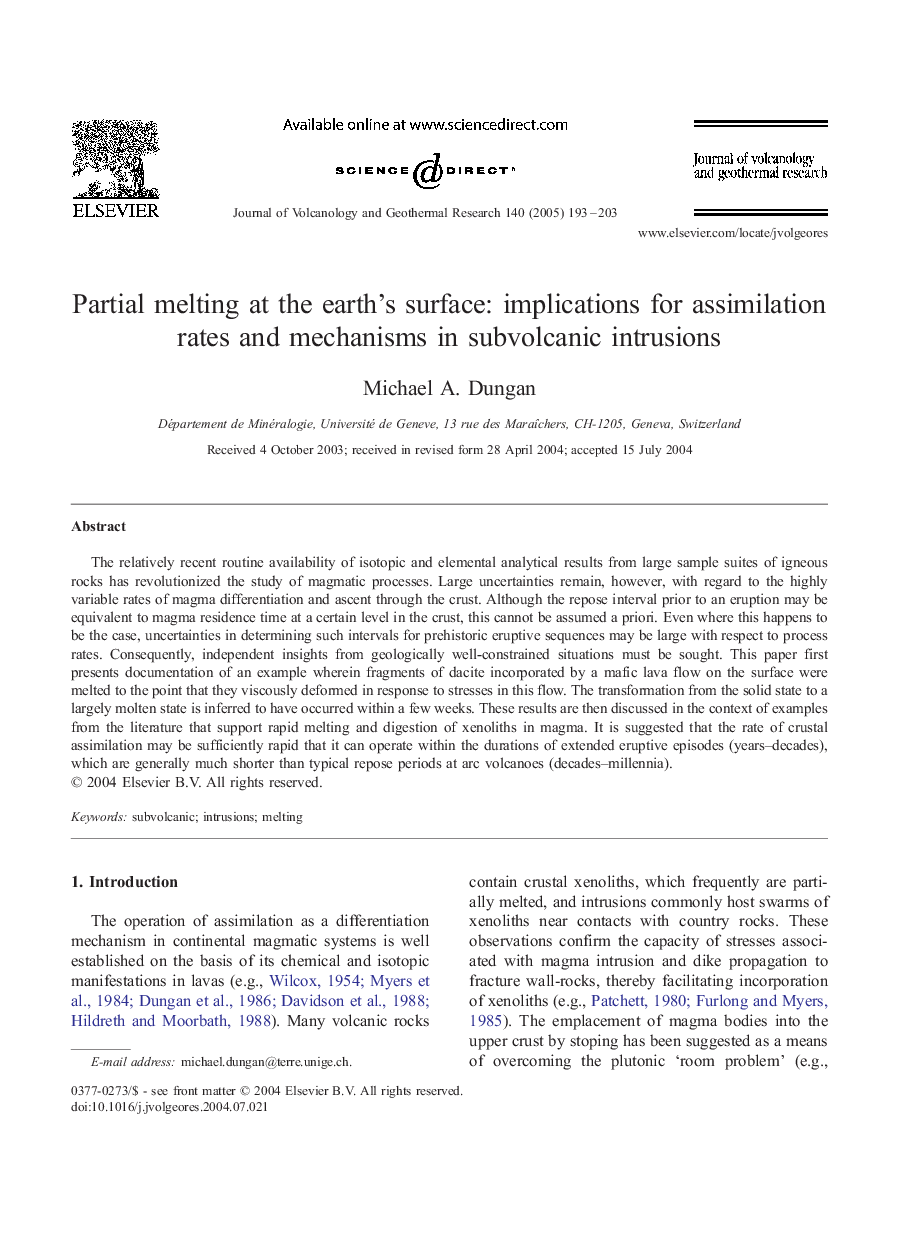| Article ID | Journal | Published Year | Pages | File Type |
|---|---|---|---|---|
| 9531156 | Journal of Volcanology and Geothermal Research | 2005 | 11 Pages |
Abstract
The relatively recent routine availability of isotopic and elemental analytical results from large sample suites of igneous rocks has revolutionized the study of magmatic processes. Large uncertainties remain, however, with regard to the highly variable rates of magma differentiation and ascent through the crust. Although the repose interval prior to an eruption may be equivalent to magma residence time at a certain level in the crust, this cannot be assumed a priori. Even where this happens to be the case, uncertainties in determining such intervals for prehistoric eruptive sequences may be large with respect to process rates. Consequently, independent insights from geologically well-constrained situations must be sought. This paper first presents documentation of an example wherein fragments of dacite incorporated by a mafic lava flow on the surface were melted to the point that they viscously deformed in response to stresses in this flow. The transformation from the solid state to a largely molten state is inferred to have occurred within a few weeks. These results are then discussed in the context of examples from the literature that support rapid melting and digestion of xenoliths in magma. It is suggested that the rate of crustal assimilation may be sufficiently rapid that it can operate within the durations of extended eruptive episodes (years-decades), which are generally much shorter than typical repose periods at arc volcanoes (decades-millennia).
Keywords
Related Topics
Physical Sciences and Engineering
Earth and Planetary Sciences
Geochemistry and Petrology
Authors
Michael A. Dungan,
